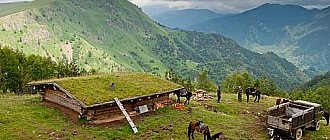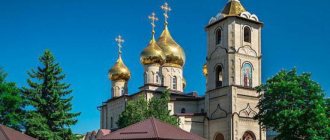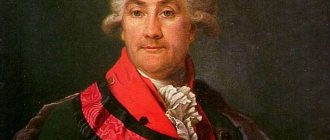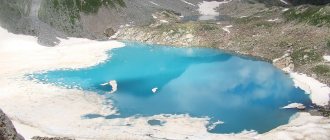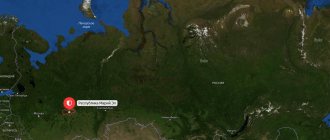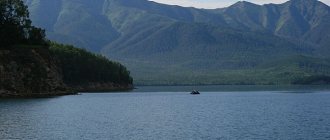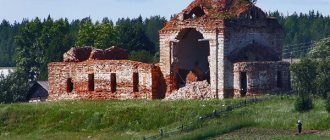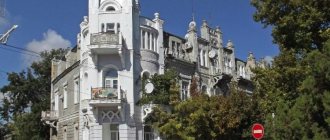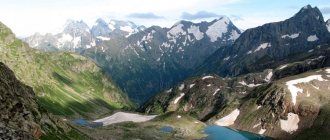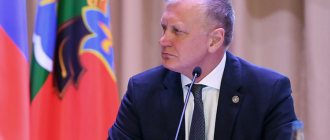Population
| Population | |||||||||
| 1926[3] | 1959[4] | 1970[5] | 1979[6] | 1987[7] | 1989[8] | 1990[9] | 1991[9] | 1992[9] | 1993[9] |
| 101 609 | ↗277 959 | ↗344 651 | ↗368 343 | ↗402 000 | ↗417 560 | ↗419 136 | ↗424 842 | ↗428 795 | ↗433 088 |
| 1994[9] | 1995[9] | 1996[9] | 1997[9] | 1998[9] | 1999[9] | 2000[9] | 2001[9] | 2002[10] | 2003[9] |
| ↗433 470 | ↗435 474 | ↗437 950 | ↗439 201 | ↗440 354 | ↗441 281 | ↘439 981 | ↗440 621 | ↘439 470 | ↘438 853 |
| 2004[9] | 2005[9] | 2006[9] | 2007[9] | 2008[9] | 2009[11] | 2010[12] | 2011[13] | 2012[14] | 2013[15] |
| ↘436 585 | ↘434 488 | ↘431 488 | ↘428 706 | ↘427 418 | ↘427 194 | ↗477 859 | →477 859 | ↘474 675 | ↘471 847 |
| 2014[16] | 2015[17] | 2016[18] | 2017[19] | 2018[20] | 2019[21] | 2020[2] | 2021[1] | ||
| ↘469 837 | ↘469 060 | ↘467 797 | ↘466 432 | ↘466 305 | ↘465 563 | ↘465 528 | ↘465 357 | ||
| Fertility (number of births per 1000 population) | ||||||||
| 1970[22] | 1975[22] | 1980[22] | 1985[22] | 1990[22] | 1995[22] | 1996[22] | 1997[22] | 1998[22] |
| 17,4 | ↗18,4 | ↗19 | ↗20,7 | ↘17 | ↘12,9 | ↘12,1 | ↘11,4 | →11,4 |
| 1999[22] | 2000[22] | 2001[22] | 2002[22] | 2003[23] | 2004[23] | 2005[23] | 2006[23] | 2007[24] |
| ↘10,4 | ↗10,8 | ↗11,1 | ↗11,5 | ↗11,6 | ↗11,9 | ↗12 | ↘11,7 | ↗14,2 |
| 2008[24] | 2009[24] | 2010[24] | 2011[25] | 2012[26] | 2013[27] | 2014[28] | ||
| ↗14,9 | ↘14,5 | ↘12,8 | ↗13,1 | ↗13,5 | ↗13,8 | ↘13,6 | ||
| Mortality rate (number of deaths per 1000 population) | ||||||||
| 1970[29] | 1975[29] | 1980[29] | 1985[29] | 1990[29] | 1995[29] | 1996[29] | 1997[29] | 1998[29] |
| 6,2 | ↗6,4 | ↗7,5 | ↗8,5 | ↘8,2 | ↗10,3 | ↗10,7 | ↘10,6 | ↘10,4 |
| 1999[29] | 2000[29] | 2001[29] | 2002[29] | 2003[30] | 2004[30] | 2005[30] | 2006[30] | 2007[31] |
| ↗10,8 | ↗11,4 | →11,4 | ↗12,1 | ↗12,4 | ↘11,6 | ↗11,9 | ↘11,4 | ↘10,8 |
| 2008[31] | 2009[31] | 2010[31] | 2011[32] | 2012[33] | 2013[34] | 2014[35] | ||
| ↗11,1 | ↘11 | ↘9,9 | ↘9,7 | →9,7 | ↘9,5 | ↗9,7 | ||
| Natural population growth (per 1000 population, sign (-) means natural population decline) | ||||||||
| 1970[36] | 1975[37] | 1980[38] | 1985[39] | 1990[40] | 1995[41] | 1996[42] | 1997[43] | 1998[44] |
| 11,2 | ↗12 | ↘11,5 | ↗12,2 | ↘8,8 | ↘2,6 | ↘1,4 | ↘0,8 | ↗1 |
| 1999[45] | 2000[46] | 2001[47] | 2002[48] | 2003[49] | 2004[49] | 2005[49] | 2006[49] | 2007[50] |
| ↘−0,4 | ↘−0,6 | ↗−0,3 | ↘−0,6 | ↘−0,8 | ↗0,3 | ↘0,1 | ↗0,3 | ↗3,4 |
| 2008[50] | 2009[50] | 2010[50] | 2011[51] | 2012[52] | 2013[53] | 2014[54] | ||
| ↗3,8 | ↘3,5 | ↘2,9 | ↗3,4 | ↗3,8 | ↗4,3 | ↘3,9 | ||
| Life expectancy at birth (number of years) | ||||||||
| 1990[55] | 1991[55] | 1992[55] | 1993[55] | 1994[55] | 1995[55] | 1996[55] | 1997[55] | 1998[55] |
| 72,3 | ↘71,9 | ↘71,4 | ↘69,9 | ↘69,1 | ↗69,5 | ↘69 | →69 | ↗69,3 |
| 1999[55] | 2000[55] | 2001[55] | 2002[55] | 2003[55] | 2004[55] | 2005[55] | 2006[55] | 2007[55] |
| ↘68,7 | ↘68,4 | ↗69,1 | ↘68,7 | ↘68,1 | ↗69,5 | ↘69,2 | ↗70,2 | ↗71,3 |
| 2008[55] | 2009[55] | 2010[55] | 2011[56] | 2012[56] | 2013[56] | |||
| ↗71,6 | ↘71,5 | ↗72,4 | ↗72,8 | ↗73,4 | ↗73,9 | |||
Ratio of men and women (data from Rosstat[57])
| Year | Number of women per 1000 men |
| 2005 | 1153 |
| 2010 | 1162 |
| 2011 | 1164 |
| 2012 | 1165 |
| 2013 | 1165 |
| 2014 | 1163 |
| 2015 | 1161 |
| 2016 | 1160 |
| 2017 | 1158 |
Ethnocultural appearance of the Karachay-Cherkess Republic
Kubanova L. V. (Cherkessk), candidate of political sciences, senior researcher at the Karachay-Cherkess Institute for Humanitarian Studies under the Government of the Karachay-Cherkess Republic
Shcherbina E. A. (Cherkessk), candidate of political sciences, senior researcher at the Karachay-Cherkess Institute for Humanitarian Studies under the Government of the Karachay-Cherkess Republic
The Karachay-Cherkess Republic is a subject of the Russian Federation, formed in 1992, and is part of the North Caucasus Federal District. More than 80 nationalities live in the republic. The republic’s passport contains the image component of the basic law of the Karachay-Cherkess Republic. It states that “the Constitution contains norms that give the residents of the republic broad rights. The Republican Constitution enshrines a provision on local traditions and customs that is absent in similar legal documents. Respect for elders, women, people of different religious beliefs is protected by the Constitution and Laws of the Karachay-Cherkess Republic, and mercy is sacred. Governing authorities are formed taking into account national representation” [1]. Such articles include:
Article 11.
1. The state languages in the Karachay-Cherkess Republic are Abaza, Karachay, Nogai, Russian and Circassian.
Article 63.
The head of the Karachay-Cherkess Republic is the guarantor of the Constitution of the Karachay-Cherkess Republic, the rights and freedoms of man and citizen, interethnic harmony, the rights and legitimate interests of the Karachay-Cherkess Republic...
Article 109.
1. Local self-government is carried out in urban, rural settlements and other territories of the Karachay-Cherkess Republic, provided for by Federal Law of October 6, 2003 N 131-FZ “On the general principles of organizing local self-government in the Russian Federation”, taking into account historical and other local traditions. The structure of local government bodies is determined by the population independently.
2. Changing the boundaries of territories in which local self-government is exercised is permitted taking into account the opinion of the population of the relevant territories [2].
According to the 2002 All-Russian Population Census
year in the Karachay-Cherkess Republic there were 439 thousand people.
Of these: 33.6% are Russians; 38.5% are Karachais; 11.3% - Circassians; 7.4% - Abaza; 3.4% - Nogais; 5.8% are other nationalities [3]. In the period from 2001 to 2009. There is an annual decline in the population of the Karachay-Cherkess Republic (from 440,621 thousand people in 2001 to 427,194 thousand people in 2009). During the 2010 census.
a sharp increase in numbers was noted ( by 50,209 people or 10.5%), it amounted to 477,403 people [4].
Population of the Karachay-Cherkess Republic
| 2001 | 2002 | 2003 | 2004 | 2005 | 2006 | 2007 | 2008 | 2009 | 2010 | 2011 | 2012 |
| 440621 | 439470 | 438853 | 436585 | 434488 | 431488 | 428706 | 427418 | 427194 | 477859 | 477403 | 474675 |
Ethnic composition of the population of the Karachay-Cherkess Republic
currently it is as follows: Karachais - 41%;
Russians – 31.6%; Cossacks ( this is how they defined their nationality
) – 0.1%; Circassians – 11.9%; Abazins – 7.8%; Nogais – 3.3%; 4.4% are other nationalities [5].
Table 1.
| Census year | Abazins | Karchaevites | Nogais | Russians | Circassians |
| 2002 | 7,4% | 38,5% | 3,4% | 33,6% | 11,3% |
| 2010 | 7,8% | 41% | 3,3% | 31,6% | 11,9% |
In dynamics since 2002 to 2010 there is a slight increase in ethnic groups of such peoples as Abazas (by 4573 people or 0.37%) and Circassians (by 6875 people or 0.54%). There was a more significant increase in the number of the ethnic majority in the republic - the Karachais; they increased by 25,126 people (2.17%). The number of Russians decreased as a percentage in relation to other peoples by 2.25% (although their absolute number increased by 2147 people), Nogais - by 781 people or 0.1%.
There was a significant increase in the number of Karachais in the republican center of Cherkessk - by 2.6%, in Karachaevsk - by 9%, in Zelenchuksky (by 2.3%), Ust-Dzhegutinsky (by 8.6%) and Prikubansky ( 19.5%) areas.
Significant decrease in the number of Russians since 2002. to 2010 occurred in the city of Karachaevsk - by 5.7%, Adyga-Khablsky (4.6%), Ust-Dzhegutinsky (2.6%), Urupsky (2.5%), Zelenchuksky (2.5%) districts [6 ].
Since 2001 There is an annual migration population decline in the republic. In 2001
.
it was -1905 (9366 people left the republic), in 2012.
The migration loss of the population has already amounted to 4443 (8401 people left).
The largest number of people leaving the republic over the past 12 years was noted in 2011
.
– 14108 people
[
7
].
The combination of a positive indicator of natural population movement and migration growth is characteristic of the Abaza, Karachay, Nogai and Khabez regions, i.e. mononational territories of the Karachay-Cherkess Republic, where Abazins, Karachais, Nogais and Circassians live compactly, respectively. Zelenchuksky and Urupsky districts of the republic belong to the territories where the negative result of natural movement and migration decline are combined. The bulk of the population in them are Russians - 62.3% and 77.6%, respectively.
The consequences of the ethno-demographic processes occurring in the republic (both natural and migration) are the processes of poly-ethnicization of previously mono-ethnic areas and mono-ethnicization of previously multi-ethnic areas. So, for example, according to statistics, in the Zelenchuk district the percentage of the population of Karachay nationality is increasing (if in 1959 Russians lived in this area 76.5%, in 2002 - 64.8%, Karachays respectively - 14% and 30.8% , in 2010 Russians - 62.3%; Karachais - 33.1%). The previously multi-ethnic Prikubansky and Ust-Dzhegutinsky districts are actively becoming monoethnic [8].
Monoethnicization in the Kuban and
Ust-Dzhegutinsky regions
| Ust-Dzhegutinsky district | Prikubansky district | |||||
| Russians | Karachais | Abazins | Russians | Karachais | Abazins | |
| 1959 | 43,1% | 48,2% | 7,8% | 47,6% | 30,4% | 13,9% |
| 1989 | 34,3% | 51,8% | 6,8% | 24,7% | 49,7% | 16,2% |
| 2002 | 24,5% | 60,7% | 9% | 18,5% | 56,2% | 17,2% |
| 2010 | 21,9% | 69,3% | 9% | 17,7% | 75,7% | 17,2% |
The conflict-generating aspect of migration is associated primarily with the natural decline and migration outflow of the Russian population. Rural settlements with a predominantly Russian population are “aging,” and there is a natural population decline. At the same time, the departure of the middle-aged and young Russian population from the republic does not stop. Russian migration is currently slow but constant.
In the Karachay-Cherkess Republic, from the moment of its formation, monoethnic
areas:
— Khabezsky district with a predominance of the Circassian population (according to the 2010 census, 95.5% of Circassians live in it);
— Karachay district with a predominance of the Karachay population (85.7%);
— Malokarachaevsky district with a predominance of the Karachay population (87.5%). Polyethnicized
(
this was mentioned above
) areas with a numerical predominance of the Russian population - Urupsky and Zelenchuksky.
The Russian population of these areas identify themselves as Cossacks,
combining class and ethnicity.
Currently, there are several multi-ethnic regions
:
- Adyge - Khablsky, where the main ethnic composition of the population is Circassians and Nogais;
- Prikubansky district - Russians, Karachais, Abazas;
- Ust - Dzhegutinsky district - Russians, Karaachevs, Abazas.
In 2005, the activities of national public organizations of small non-titular ethnic groups of the republic intensified to create administrative territorial districts: Abaza and Nogai. On June 27, 2005, an extraordinary extraordinary congress of the Abaza people took place. The reason for its convening was the implementation of the legal act of the KCR No. 38 RZ “On certain issues of local self-government in the KCR regarding the organization of municipal districts on the territory of the KCR”, according to which residents of the Abaza village of Kubina lost a third of their territory, which came under the jurisdiction of the Ust-Dzhegutinsky municipal formation , which includes settlements with a predominantly Karachay population. Among the demands of the congress, the following were highlighted: determination of the status of the Abazas within the administrative-territorial unit within the Karachay-Cherkess Republic; declaration of an act of civil disobedience to the leadership of Karachay-Cherkessia in case of failure to comply with the demands of the emergency congress, among which the main one was the repeal of the illegal law “On establishing the boundaries of municipalities of the Ust-Dzhegutinsky region and giving them the appropriate status.” To solve the problems of the Abazins and Nogais, Resolution of the National Assembly of the Karachay-Cherkess Republic No. 149 of July 9, 2005 “On the formation of the Abaza and Nogai regions on the territory of the Karachay-Cherkess Republic” and the Law of the Karachay-Cherkess Republic “On amendments to the Law of the Karachay-Cherkess Republic “On guarantees of the rights of the indigenous small-numbered people of the Abazins in Karachaevo” were adopted. Circassian Republic" September 21, 2005. As a result of the active work of the Abaza elite, which was supported by the people, the Abaza district was formed on the territory of the republic, its territorial borders and municipal bodies were determined.
At the end of 2006, a similar resolution was adopted in relation to the Nogai district “Resolution on the formation on the territory of the Karachay-Cherkess Republic of the administrative-territorial unit - the Nogai region” dated December 15, 2006 No. 311. A transition period was determined until 2009, and by the end of this year the Nogai district was formalized territorially and administratively.
Thus, despite the Center’s policy of consolidating regions and abandoning internal ethnic segmentation, two new districts were formed in Karachay-Cherkessia.
The creation of new districts intensified the activities of public organizations of the Russian population - “Rusi”, “Cossacks”, which came up with proposals for organizing a Russian district. From February 12 to 15, 2010, on the initiative of the Public Chamber of the Russian Federation, as part of the implementation of the “Peace for the Caucasus” project, meetings of the OP working group with the population of the republic were held in the Karachay-Cherkess Republic. The OP working group did not go to areas with a predominance of the Russian population, but activists of the social movements “Rus” and “Kazachka” arrived in Cherkessk to meet with them. At the meeting they stated that there are ethnically separate regions in the republic, not just a Russian region. Russian problems are not being solved, but accumulating. To solve the problems of the Russian population, the participants of the meeting - activists of Russian social movements - stated that it was necessary either to create a Russian district, or to abolish the republic, creating three districts - Karachayevsky, Cherkessky and Batalpashinsky [9].
The Ministry of the Karachay-Cherkess Republic for Nationalities, Mass Communications and Press is the executive body of state power of the Karachay-Cherkess Republic. It participates in the implementation of national and information policy, regulation and interdepartmental coordination in the field of interethnic relations, in the field of mass media, information exchange, printing, publishing, printing activities, as well as the distribution of periodicals, books and other products on the territory of the republic. In accordance with the decision of the extended board of the Ministry dated February 21, 2013, the interfaith sphere was added to it, in particular, relations with religious organizations came under the Ministry’s competence. Therefore, the mufti of Karachay-Cherkessia Ismail-haji Berdiev and the dean of the parishes of the Northern Karachay-Cherkess district, Archpriest Mikhail Samokhin, were added to the board [10].
The institutions subordinate to the Ministry are the editorial offices of newspapers published in the languages of the peoples of the republic: Republican state budgetary institution “Editorial office of the newspaper “Republic Day”; Republican state budgetary institution "Editorial office of the newspaper" Karachay "; Republican state budgetary institution “Editorial office of the newspaper “Cherkess Heku”; Republican state budgetary institution "Editorial office of the newspaper "Abazashta"; Republican state budgetary institution “Editorial office of the newspaper “Nogai Davysy”; Republican state budgetary institution “Editorial office of the literary and artistic magazine for children “Mammetekey” (Dandelion); Republican state budgetary institution "Karachay-Cherkess Republican Book Publishing House".
Since 1993 The Republican Center for Folk Culture (RCPC) operates in the Karachay-Cherkess Republic, whose priority activity is the preservation and revival of the national cultural heritage of the peoples of the Karachay-Cherkess Republic. A specific form of organization of national cultural centers in the Karachay-Cherkess Republic can be considered as the national cultural sports centers currently being created, the first of which was opened in A. Psyzh, Abaza district, February 9, 2013.
There are 505 public associations registered in the republic [11]. National public associations of both constituent peoples and small ethnic groups are widely represented. The level of their activity is mainly regional. National public organizations name the ethnocultural development of their peoples and language preservation as the main vector of activity. Public organizations of small ethnic groups in the Karachay-Cherkess Republic - Ossetians, Greeks, Armenians, Azerbaijanis, Jews set the preservation and cultural development of their peoples as their main goals. The Ministry of Nationalities Affairs, Mass Communication and Press regularly holds meetings with representatives of national minorities of the Karachay-Cherkess Republic. Their goal is to strengthen the positive cooperation of all nationalities living on the territory of the Republic.
In the Karachay-Cherkess Republic, the national-cultural autonomies of the Circassians are active - one of the first in the Karachay-Cherkess Republic, the Nogais "Nogai El", the Ossetians, and the Germans. Currently, the Ministry of Justice of the Republic is registering the national-cultural autonomy of the Abazins. The activities of the NCA in the Karachay-Cherkess Republic are quite active; for example, the NCA of the Circassians initiated the establishment of the “Day of the Adyghe Language” in the republic. In the republic, the authority of public organizations and leaders of the NCA is traditionally higher than that of political parties. Public organizations are perceived by the peoples of the Karachay-Cherkess Republic as legitimate, representative bodies that express the interests of each of the peoples and are capable of initiating solutions to the problems of these peoples.
In the Karachay-Cherkess Republic, on December 14, 1996, the Law of the Karachay-Cherkess Republic “On Culture” No. 197-XXII was adopted, which noted that its adoption was due to the need to recognize the fundamental role of culture in the development and self-realization of the individual, the preservation of the national identity of peoples, as well as the desire for interethnic cooperation and integration of the culture of the multinational Karachay-Cherkess Republic into world culture. In 2009, Appendix No. 1 to the Decree of the Government of the Karachay-Cherkess Republic of March 25, 2009 No. 82 “Concept for the development of education in the field of culture and art in the Karachay-Cherkess Republic for 2009-2015” was adopted, which characterizes the state of education in the field culture.
The most important area of activity in the field of culture in the republics of the North Caucasus, including the Karachay-Cherkess Republic, is folk art. The following can be considered as regulatory documents for organizing such activities:
— Articles 14, 15,16 of the Federal Law No. 131-FZ (Article 29 of the Federal Law of December 31, 2005 No. 199-FZ “On the General Principles of the Organization of Local Self-Government in the Russian Federation”). According to these articles, issues of local importance include the powers to create conditions for the development of local traditional folk art, participation in the preservation and development of folk art.
The Republican Center for Folk Culture organizes the activities of folk groups of various directions in the Karachay-Cherkess Republic. The priority areas in the activities of the RCSC are the preservation and development of folk art, the preservation and revival of the national cultural heritage of the peoples of the Karachay-Cherkess Republic. He controls the work of all leisure-type cultural institutions. Today, there are 164 club-type institutions in the republic, employing 786 people, and 1,350 club formations with a staff of more than 20,000 people.
During the year, the center produces and distributes more than 30 information collections to cultural departments (“Phoenix”, “Accent”, etc.). The following are interesting:
— calendar of folklore holidays of the peoples of the Karachay-Cherkess Republic;
— a repertoire collection of songs of the peoples of the republic;
— Orthodox and Muslim calendars;
— children's folk calendar (Orthodox).
Under the guidance of the center's specialists and with their direct assistance, methodological and practical work is carried out in district, rural cultural centers and the Central Culture and Culture Center (leisure and cultural center). Today there are about 160 club institutions in the regions of the republic, and club formations operate on their basis.
There are 22 folk and pop dance groups in the Karachay-Cherkess Republic, 20 have the title of “folk”, 2 – exemplary. Among them are folklore groups: “Urupchanka”, “Pearl”, “Azure Color” (Urupsky district); “Kubanka” - song and dance, “Marichka”, “Kazachka” (Zelenchuksky district); “Apsaty”, “Alan” (Ust-Dzhegutinsky district); “Sudarushka” (Prikubansky district); “Cherkessia”, “Tiepal” (Khabesky district) (in Khabez the non-permanent team “Uozyrmys” is preparing for events); "Alibek" (Karachaevsk)
There are three folk museums in the Karachay-Cherkess Republic: 1. In the Malokarachaevsky district, in the village. Uchkeken, in the House of Culture, 2. in a. Uchkulan - on the school grounds, 3. in Ekon-Khalk - on the school grounds, a museum of history and culture of the Nogais; folk theaters: 1. “Adyge Nemys” - a. Ersakon, 2. “Tubeshiu” - a. Nizhnyaya Teberda, 3. “Inzhich” - SDK a. Inzhich - Chukun, "Tulpar" - SDK a. Erkin – Yurt.
The activities of the RCSC contribute to the establishment and strengthening of cultural ties between peoples, reflecting the uniqueness of the people in various genres of art, preserving the traditions of dances, songs, and folklore.
The ethnocultural image of the republic presented in the article only schematically reflects the features of ethnic, cultural, demographic, migration and other processes in the Karachay-Cherkess Republic, which together determine its distinctive features.
Notes
1.Electr. resource: https://yougor.ru/karachaevo-cherkesskaya-respublika.html.
2. Electric. resource: https://constitution.garant.ru/region/cons_karach/chapter/1/#100000.
3. Population of the Karachay-Cherkess Republic” // Statistical collection based on the materials of the 2002 All-Russian Population Census. Book 1 - Cherkessk, 2005. - P.325.
4.Electr. resource: https://wiki.zarinsk.ru/wiki/Population of Karachay-Cherkessia
5. Website of the Ministry of Nationalities, Mass Communications and Press of the Karachay-Cherkess Republic. Section "Ethnic composition of the population of the Karachay-Cherkess Republic."
6. Electric resource: https://wiki.zarinsk.ru/wiki/ Population of Karachay-Cherkessia. National composition by region.
7. Electric resource: https://kchrstat.gks.ru/wps/wcm/connect/rosstat_ts/kchrstat/ru/statistics/population/. Official website of the territorial body of the FSGS for the Karachay-Cherkess Republic. Data for 2012 Republic Day, February 12, 2013 Socio-economic situation of the Karachay-Cherkess Republic in 2012
8. Ibid. — P.325 – 327.
9. Meeting materials collected by the expert. Independent social and political newspaper of the Karachay-Cherkess Republic “Cherkessk” No. 14 dated 04/20/2010.
10.Electr. resource: https://www.pokrov-cherkessk.ru/news/22_02_13_2news.php
11. 90 years of KCR. Statistical collection. – Cherkessk, 2012 – P.150.
The material was published as it was provided by the organizer of the conference - the Research Center of Traditional Culture of the State National Technical University "Kuban Cossack Choir". You can leave your comments or ask questions to the authors of the reports from November 29, 2013 to December 29, 2013 by email [email protected]
“Ethnocultural space of the South of Russia (XVIII – XXI centuries.” All-Russian scientific and practical Internet conference on the official website of the Kuban Cossack Army https://slavakubani.ru/.
Krasnodar, November-December 2013.
National composition
Ethnic map of the Karachay-Cherkessia Republic for each settlement, 2010 census Population of Karachay-Cherkessia by municipalities according to the 2010 population census, %
National composition of the population of Karachay-Cherkessia according to the population censuses of 1959, 1979, 1989, 2002 and 2010 years:
| 1959 [58] people | % | 1979 [59] people | % | 1989 [60] people | % | 2002 [61] people | % from everything | % of those who indicated nationality | 2010 [62] people | % from everything | % of those who indicated nationality | |
| Total | 277959 | 100,00 % | 367111 | 100,00 % | 414970 | 100,00 % | 439470 | 100,00 % | 477859 | 100,00 % | ||
| Karachais | 67830 | 24,40 % | 109196 | 29,74 % | 129449 | 31,19 % | 169198 | 38,50 % | 38,51 % | 194324 | 40,67 % | 40,97 % |
| Russians | 141843 | 51,03 % | 165451 | 45,07 % | 175931 | 42,40 % | 147878 | 33,65 % | 33,66 % | 150025 | 31,40 % | 31,63 % |
| Circassians | 24145 | 8,69 % | 34430 | 9,38 % | 40241 | 9,70 % | 49591 | 11,28 % | 11,29 % | 56466 | 11,82 % | 11,90 % |
| Abazins | 18159 | 6,53 % | 24245 | 6,60 % | 27475 | 6,62 % | 32346 | 7,36 % | 7,36 % | 36919 | 7,73 % | 7,78 % |
| Nogais | 8903 | 3,20 % | 11872 | 3,23 % | 12993 | 3,13 % | 14873 | 3,38 % | 3,38 % | 15654 | 3,28 % | 3,30 % |
| Ossetians | 3644 | 1,31 % | 3832 | 1,04 % | 3806 | 0,92 % | 3333 | 0,76 % | 0,76 % | 3142 | 0,66 % | 0,66 % |
| Armenians | 892 | 0,32 % | 2424 | 0,66 % | 2359 | 0,57 % | 3197 | 0,73 % | 0,73 % | 2737 | 0,57 % | 0,58 % |
| Ukrainians | 4011 | 1,44 % | 4555 | 1,24 % | 6308 | 1,52 % | 3331 | 0,76 % | 0,76 % | 1990 | 0,42 % | 0,42 % |
| Tatars | 1280 | 0,46 % | 1876 | 0,51 % | 2496 | 0,60 % | 2021 | 0,46 % | 0,46 % | 1696 | 0,35 % | 0,36 % |
| Greeks | 1945 | 0,70 % | 1576 | 0,43 % | 1630 | 0,39 % | 1349 | 0,31 % | 0,31 % | 1276 | 0,27 % | 0,27 % |
| Azerbaijanis | 152 | 0,05 % | 475 | 0,13 % | 930 | 0,22 % | 1024 | 0,23 % | 0,23 % | 976 | 0,20 % | 0,21 % |
| Turks | 0,00 % | 108 | 0,03 % | 275 | 0,07 % | 683 | 0,16 % | 0,16 % | 904 | 0,19 % | 0,19 % | |
| Gypsies | 418 | 0,15 % | 297 | 0,08 % | 496 | 0,12 % | 804 | 0,18 % | 0,18 % | 896 | 0,19 % | 0,19 % |
| Kabardians | 775 | 0,28 % | 756 | 0,21 % | 1033 | 0,25 % | 915 | 0,21 % | 0,21 % | 771 | 0,16 % | 0,16 % |
| Chechens | 0,00 % | 212 | 0,06 % | 460 | 0,11 % | 1757 | 0,40 % | 0,40 % | 674 | 0,14 % | 0,14 % | |
| Georgians | 389 | 0,14 % | 377 | 0,10 % | 529 | 0,13 % | 556 | 0,13 % | 0,13 % | 461 | 0,10 % | 0,10 % |
| Belarusians | 669 | 0,24 % | 1043 | 0,28 % | 1319 | 0,32 % | 733 | 0,17 % | 0,17 % | 443 | 0,09 % | 0,09 % |
| Balkars | 0,00 % | 293 | 0,08 % | 402 | 0,10 % | 476 | 0,11 % | 0,11 % | 418 | 0,09 % | 0,09 % | |
| Lezgins | 0,00 % | 78 | 0,02 % | 401 | 0,10 % | 444 | 0,10 % | 0,10 % | 400 | 0,08 % | 0,08 % | |
| Uzbeks | 0,00 % | 197 | 0,05 % | 271 | 0,07 % | 193 | 0,04 % | 0,04 % | 398 | 0,08 % | 0,08 % | |
| Germans | 153 | 0,06 % | 590 | 0,16 % | 871 | 0,21 % | 486 | 0,11 % | 0,11 % | 307 | 0,06 % | 0,06 % |
| Dargins | 56 | 0,02 % | 242 | 0,07 % | 527 | 0,13 % | 290 | 0,07 % | 0,07 % | 293 | 0,06 % | 0,06 % |
| Laktsy | 207 | 0,07 % | 361 | 0,10 % | 438 | 0,11 % | 349 | 0,08 % | 0,08 % | 288 | 0,06 % | 0,06 % |
| Kumyks | 65 | 0,02 % | 166 | 0,05 % | 246 | 0,06 % | 244 | 0,06 % | 0,06 % | 264 | 0,06 % | 0,06 % |
| Abkhazians | 0,00 % | 75 | 0,02 % | 82 | 0,02 % | 364 | 0,08 % | 0,08 % | 241 | 0,05 % | 0,05 % | |
| Kazakhs | 117 | 0,04 % | 339 | 0,09 % | 354 | 0,09 % | 248 | 0,06 % | 0,06 % | 227 | 0,05 % | 0,05 % |
| Avars | 250 | 0,09 % | 146 | 0,04 % | 274 | 0,07 % | 207 | 0,05 % | 0,05 % | 216 | 0,05 % | 0,05 % |
| other | 2056 | 0,74 % | 1898 | 0,52 % | 3374 | 0,81 % | 2492 | 0,57 % | 0,57 % | 1954 | 0,41 % | 0,41 % |
| indicated nationality | 277959 | 100,00 % | 367110 | 100,00 % | 414970 | 100,00 % | 439382 | 99,98 % | 100,00 % | 474360 | 99,27 % | 100,00 % |
| did not indicate nationality | 0 | 0,00 % | 1 | 0,00 % | 0 | 0,00 % | 88 | 0,02 % | 3499 | 0,73 % |
Ethnic composition by region (2010)
Information is provided according to the 2010 population census[63]:
| District (city) | Karachais | Russians | Circassians | Abazins | Nogais |
| Cherkessk | 16,4 % | 54,7 % | 13,2 % | 8,2 % | 1,5 % |
| Karachaevsk | 75,3 % | 17,3 % | 1,7 % | 0,6 % | 0,2 % |
| Abaza district | 1,9 % | 4,1 % | 5,0 % | 87,1 % | 0,4 % |
| Adyge-Khablsky district | 6,1 % | 10,0 % | 39,4 % | 30,0 % | 4,6 % |
| Zelenchuksky district | 33,1 % | 62,3 % | 0,3 % | 0,1 % | 0,1 % |
| Karachaevsky district | 85,7 % | 3,4 % | 5,0 % | 0,2 % | 0,0 % |
| Malokarachaevsky district | 87,5 % | 2,2 % | 0,1 % | 7,8 % | 0,3 % |
| Nogai district | 1,0 % | 12,4 % | 3,1 % | 1,7 % | 76,7 % |
| Prikubansky district | 75,7 % | 17,7 % | 0,6 % | 0,6 % | 0,5 % |
| Urupsky district | 18,3 % | 77,6 % | 0,4 % | 0,1 % | 0,1 % |
| Ust-Dzhegutinsky district | 69,3 % | 21,9 % | 0,9 % | 4,4 % | 0,2 % |
| Khabezsky district | 0,3 % | 0,6 % | 95,5 % | 1,2 % | 2,0 % |
Natural population growth
The indicator depends on several factors: conditions, prices, availability and other subtleties of modern incentives to move, settle down and start a family. And a region such as Karachay-Cherkessia cannot boast of significant population growth since the first population estimates. The region is small, mainly consisting of townships, so young people prefer to settle in cities or leave in search of a better life.
As a result, the growth rate is small and did not exceed 12. Currently, the growth rate is much lower - in recent years it varies between 3 and 5.
In the period from 1999 to 2003, a negative trend was observed - a natural decline in the population.
The population of Karachay-Cherkessia is distinguished by its national diversity, but at the same time it is declining disproportionately. A small number of all urban settlements were able to exceed the threshold of 100 thousand people, moreover, the very number of urban settlements in the entire vast region is critically small. This affects both population growth and birth and death rates throughout the region. Unfortunately, if a number of programs are not undertaken, population decline may become a sad trend for the entire region. A sharp decline will lead to the decline of the region, its dissolution into separate administrative units and their inclusion in other regions.
Ethnogenesis
| The section lacks links to sources. Information must be verifiable or it may be deleted. You can edit the article to add links to authoritative sources. This mark was set on July 2, 2011 . |
The structure of the national composition of modern Karachay-Cherkessia is the result of global geopolitical changes that have occurred in the North Caucasus over the past three millennia.
The ethnogenesis of the indigenous peoples of Karachay-Cherkessia is very complex and has not yet been clearly defined.
In accordance with the scientific developments available today, the basis of the most numerous Karachay-Balkar people in the republic should be considered the local Caucasian tribes, bearers of the Koban archaeological culture, which developed in the 14th-13th centuries. BC e. in the mountains and gorges of the Central Caucasus. According to E.P. Alekseeva, in the 4th century, one of the Alan tribes, who were expelled by the Huns from the steppes of the Ciscaucasia to the mountains, merged with the highlanders - the descendants of the Kobans. In the V-VI centuries. groups of Bulgarian-Khazars settled in the foothills of modern Karachay-Cherkessia, runic inscriptions appeared, and a number of large fortified cities were built (modern Khumarinskoye, Rimgorskoye fortified settlement, etc.). The previously formed Iranian-speaking Alan ethnic group was joined by Turkic-speaking Bulgarians and Kipchaks, who later became the main ethnic core of the Karachay-Balkar people.
The Circassians (Adygs) formed as a people in the North-West Caucasus. Their ancestors, according to domestic Caucasian experts, should be considered the Meotian tribes of the Zikhs and Kasogs. These tribes, who lived on the Black Sea coast of the Caucasus, in the mountains and foothills of the Trans-Kuban region since time immemorial, by the 10th century had formed into a single nation with a common language that had a number of tribal dialects.
After the defeat of the Alanian state (tribal union) by the Mongols in the 13th century and the pogroms committed by the hordes of the Central Asian conqueror Tamerlane at the very end of the 14th century, the remnants of the population of Alania took refuge in the mountains. At the same time, the Circassians (Kabardians) began to move to the liberated territory and occupied the flat part of the upper reaches of the Kuban and Zelenchuks and moved further to the east.
In the 15th-16th centuries, another ethnic group appeared on the ethnopolitical map of modern Karachay-Cherkessia - the Abazas. The history of this people is rooted in the history of medieval Abkhazia. According to the conclusions of researchers, from ancient times until the 10th century, the Abkhazians and Abazas constituted one ethnic community, a single linguistic group, living in the same territory - on the eastern coast of the Black Sea (in the northwestern regions of present-day Abkhazia and further to the northwest, up to Tuapse). At the turn of the XV-XVI centuries. Abazas began to migrate to the northeast. Some of them, together with the Circassians, moved across the North Caucasus. The other part penetrated the northern slopes of the Caucasus Range through the passes - Belorechensky, Marukhsky, etc. The resettlement of the Abazas to the North Caucasus and constant movements continued until the 19th century and finally ended with settlement in the upper reaches of the Kuma and along the middle reaches of Zelenchuk and Kuban in the second half of the 19th century.
The time of formation of the Nogai people is considered to be the end of the 14th century, when the Tatar-Mongol state of the Golden Horde began to decline, and the so-called Nogai Horde emerged from its composition. It is difficult to determine exactly which Nogai groups were part of the Nogai Horde during its formation. Judging by the data of the Edygei epic, the following tribes took part in the formation of the Nogai people: Keneges, Kangly, Argyn, Kongrat, Syryk (Shirik), Kipchak, Mangyt, Sun (Uysun), Laypan and, obviously, Naiman. Of the listed tribes: the Kongurat and Naimans are most likely of purely Mongolian origin, the Mangits are Turkicized tribes of the Mongolian branch, and experts tend to attribute the rest of the tribal formations to the Turkic language group.
Exactly when exactly the newly formed ethnic group began to call themselves Nogai is not precisely established. Researchers believe that this happened in the second half of the 15th century. In any case, the term “Nogai” (“Nagai”) is already found in Russian documents of the late 15th century.
Around the middle of the 16th century, the Nogai Horde was divided into Greater and Lesser Nogais. The large horde migrated to the west over time, the small horde roamed in the south of Ukraine, in the Don region, the Azov region, the Black Sea region, the Ciscaucasia, and entered the lower, and later the upper Kuban, and Pyatigorye. From the middle of the 16th century, there was a gradual settlement of the Small Nogai nomads in the upper reaches of the Kuban and Zelenchuks, which by the middle of the 17th century ended with the settlement of part of the Nogai tribes in the north of modern Karachay-Cherkessia.
Thus, by the end of the 17th century, the settlement of indigenous peoples across the territory of modern Karachay-Cherkessia is coming to its logical conclusion. Karachay-Cherkessia becomes a place of common residence for four ethnic groups that are different in nature and origin. Since then and to this day, Karachais, Circassians, Abazas and Nogais have lived in the same neighborhood. During this time, they experienced a lot in common, underwent a number of territorial redistributions and administrative reforms, up to unification within the framework of one multinational state entity.
General information and history of Karachay-Cherkessia
Unlike many other Caucasian republics, most Russians are unable to say anything about Karachay-Cherkessia.
Perhaps only lovers of modern pop music can remember that Dima Bilan is from these places, but this is rather a minus for the republic than a plus. Since no one in the country knows anything about the Karachais and Circassians, the local KVN members allow themselves the following jokes: “You probably think that since we are from the Caucasus, everyone shoots in the air at our weddings?” - No, these are Dagestanis! - Do you think we came to steal brides? - No, these are Ingush! — Do you think we’ll trade at the market? - No, these are Azerbaijanis! - And we are Karachais and Circassians. It’s not at all clear what to expect from us, right?
Karachay-Cherkessia is a small republic in the Caucasus Mountains. According to domestic tourists, only Kabardino-Balkaria has more beautiful nature than here. Indeed, tourism is rapidly developing in the region, hotels are being built, and new routes are being laid. This is a positive trend for a region close to which there was a war. It is worth recognizing that Karachay-Cherkessia is perhaps the most friendly republic of the North Caucasus towards Russians. Of course, conflicts on ethnic grounds happen here too, but tell me better, where they don’t happen?
The beauty of the Arkhyz region. Photo by Tolstih Olga
Unlike other Caucasian regions, Russia did not have to conquer Karachay-Cherkessia. In the Middle Ages, these lands were actively subject to raids by the Turks and Crimean Tatars, and then the local residents, who were mainly engaged in agriculture and were mediocre warriors, turned to Moscow with a request for protection.
The territory of modern Karachay-Cherkessia was annexed to the Russian state in the first half of the 19th century, and specifically to the Kuban region. This step broke the usual way of life of the Karachais and Circassians.
The lands were inhabited by Cossacks, who actively assimilated with the local residents, which is why it is now very difficult to determine the nationality of the population in the territory of Karachay-Cherkessia. This is how you look at a person on the street. It seems that his face is Slavic, his eyes are wide, his hair is light brown, and he speaks Circassian on the phone.
Good relations between the indigenous population and Russian Cossacks not only changed the appearance of the joint descendants, but also promoted cultural and even religious exchange. Nowadays the most tolerant Muslims towards Orthodoxy live here, and in general the Caucasians closest to Russians in mentality.
Sentinsky temple near the village of Nizhnyaya Teberda. Photo by juri (https://fotki.yandex.ru/users/jurireal/)
There are also dark spots in the history of Karachay-Cherkessia. In 1942-43, these lands were occupied by the Nazis. According to Joseph Stalin, the Karachais behaved unworthily during the Great Patriotic War, entered into regular relations with the Germans, and helped the enemy. Whether this was the case or not is not entirely known. There are many opinions, but few facts. As a result, Stalin deported several tens of thousands of Karachais and Circassians from their native places. The places of deportation were Kazakhstan and Kyrgyzstan, where the indigenous inhabitants of the Caucasus were sent in trains. The steppes of Central Asia were filled with children of the mountains: Circassians, Kabardians, Chechens, Balkars and other peoples.
The process of rehabilitation and return to the homeland began only in the late 50s, when the “Great Corn Farmer” Nikita Sergeevich Khrushchev broke the cult of personality and canceled all the decisions of the “Father of Nations”, who dispersed his children throughout the Union.
After the Great Patriotic War, by the way, Karachay-Cherkessia was deprived of its territorial sovereignty. This land was part of the Stavropol Territory, and predominantly Russians and Ukrainians lived here.
After the collapse of the Soviet Union, no one invested money in the republic. There was a war nearby. Explosions and military operations did not greatly affect Karachay-Cherkessia, but the republican infrastructure had become thoroughly outdated over the years of devastation. The roads were of terrible quality, most health resorts were closed, and there was no work. Now the situation is gradually improving, but it is still far from ideal. Although the region receives money from the federal treasury, it is not in the same volume as, for example, Chechnya. It doesn’t make much sense to move here from other regions, but it’s very worth going to relax and enjoy the beauty.
Geographical position
Karachay-Cherkessia is located along the Main Caucasus Range, where it borders Abkhazia in the south. In the west, the neighbor of the heroine of our material is the Krasnodar region, in the north - Stavropol, in the east - Kabardino-Balkaria.
Most of the republic is located in mountainous areas. On the territory of Karachay-Cherkessia there are 3 zones: the Caucasus mountains, foothills and foothill plain. The highest point in Europe, Elbrus, stands out in the mountains of the region. The republic is full of water resources. As many as 172 rivers flow through the small territory of Karachay-Cherkessia, there is the Kuban reservoir and more than 130 high-mountain lakes. This entire water system forms the Big Stavropol Canal, which supplies water to the entire Stavropol Territory.
Typical landscape of the region. Photo by Dimius7 (https://fotki.yandex.ru/users/dimius7/)
In addition to water, Karachay-Cherkessia is rich in natural resources: marble, ores, coal, granite. The republic's fauna has also been preserved. The Teberdinsky and Caucasian nature reserves have been created in the region.
Population
Only 469,837 people live in Karachay-Cherkessia, less than in any of the districts of Moscow. The population density in the republic is 32.90 people per square kilometer. The urban population is 43.07%. The bulk of the townspeople are residents of Cherkessk. 127 thousand inhabitants live there. An interesting capital, isn't it? 127 thousand inhabitants. They probably know each other by sight.
38.5% of the inhabitants of Karachay-Cherkessia are Karachais, 33.6% are Russians, 11.3% are Circassians, 7.4% are Abaza. Another 76 nations are represented in small numbers. If we take into account how many people live in the republic, it is obvious that all nations are represented by several people, just like on Noah's Ark.
Despite the fact that Karachay-Cherkessia is located in the North Caucasus, there are not many women in hijabs here, and no one shoots into the air from cars. Slavs in the republic can feel quite free.
Crime
In Karachay-Cherkessia everything is quite calm. We remind you that only half a million people live in the republic. Will people steal from friends and relatives? Jokes aside, there are few criminals in the region. From time to time, of course, incidents happen, but most often they happen on a domestic basis.
Panorama of Cherkessk. Photo by gibus9791 (https://fotki.yandex.ru/users/gibus9791/)
Unemployment rate
In the region, the average salary is 17,000 rubles. For Karachay-Cherkessia this is normal money.
The region's 17,000 residents earn money in factories and factories: cement, refrigeration engineering, low-voltage equipment, rubber products, etc. Those who do not find work in production go to work in trade. The Magnit and Mercury supermarket chains operate in the region.
Property value
Prices for apartments in the Karachay-Cherkess Republic are equal to the national average. For example, in order to buy a one-room apartment in small Cherkessk and become 127,001 residents, you need to have no less than one and a half million rubles. With a salary of 17,000 rubles, earning such an amount will be problematic.
Climate
In winter, the air temperature in Karachay-Cherkessia rarely drops below -5 °C. Usually the thermometer stays around zero degrees. Summer in the republic is hot, but not stuffy. Living here is comfortable. True, people are in no hurry to move here. No conditions have been created for the displaced.
Religion
Islam, Orthodoxy and traditional beliefs are mainly represented in the republic. According to a large-scale survey by the Sreda research service, conducted in 2012, the item “I profess Islam, but am neither a Sunni nor a Shiite” was chosen by 34% of respondents, “I profess Orthodoxy and belong to the Russian Orthodox Church” - 14%, “I profess Sunni Islam " - 13 %. The item “I profess the traditional religion of my ancestors, I worship the gods and forces of nature” in Karachay-Cherkessia was chosen by 12.2% of respondents - the fourth result in the Russian Federation, “I believe in God (in a higher power), but I do not profess a specific religion” - 12%, “ I don’t believe in God” - 7%, “I profess Christianity, but do not consider myself to be a member of any Christian denomination” - 2%, “I profess Shiite Islam” - 1%. The rest are less than 1%[64][65].
Settlements
Main article: Settlements of Karachay-Cherkessia
Settlements with a population of more than 5 thousand people
Cherkessk
| ↘123 148[66] | |
| Ust-Dzheguta | ↗30 758[66] |
| Karachaevsk | ↘20 711[66] |
| Zelenchukskaya | ↘19 449[67] |
| Uchkeken | ↗17 060[68] |
| Sentry | ↗9952[67] |
| ↗8672[66] | |
| Psyzh | ↗8836[68] |
| Pregradnaya | ↗7466[67] |
| Teresa | ↘7162[68] |
| Kardonikskaya | ↗6747[68] |
| Khabez | ↗6424[68] |
| ↘5912[68] | |
| Kurdzhinovo | ↗5994[67] |
| Mednogorsky | ↘5131[66] |
| Ali-Berdukovsky | ↘5489[68] |
| Chapaevskoe | ↗5569[68] |
| Kumysh | ↘5217[68] |
